- Home
- About
- Contributors
- DSR Teams
- Baton Rouge Rugby
- Baton Rouge Posts
- Baton Rouge Photos
- Battleship Rugby
- Battleship Rugby Posts
- Battleship RFC Photos
- Birmingham RFC
- Hammond
- Jackson RFC
- Louisiana Exiles Photos
- Louisiana State University
- LSU Posts
- Loyola University
- Mississippi State
- Montgomery RFC
- New Orleans RFC
- New Orleans Posts
- New Orleans Photos
- Okaloosa RFC
- Panama City Beach RFC
- Pensacola RFC
- Southern Mississippi
- Spring Hill College
- Tallahassee RFC
- Troy University
- Tulane University
- Tulane Posts
- U of West Florida
- University of Louisiana
- University of New Orleans
- University of South Alabama
- Internationals
- History
- Visitors
Rugby at Louisiana State University, 1970-2017
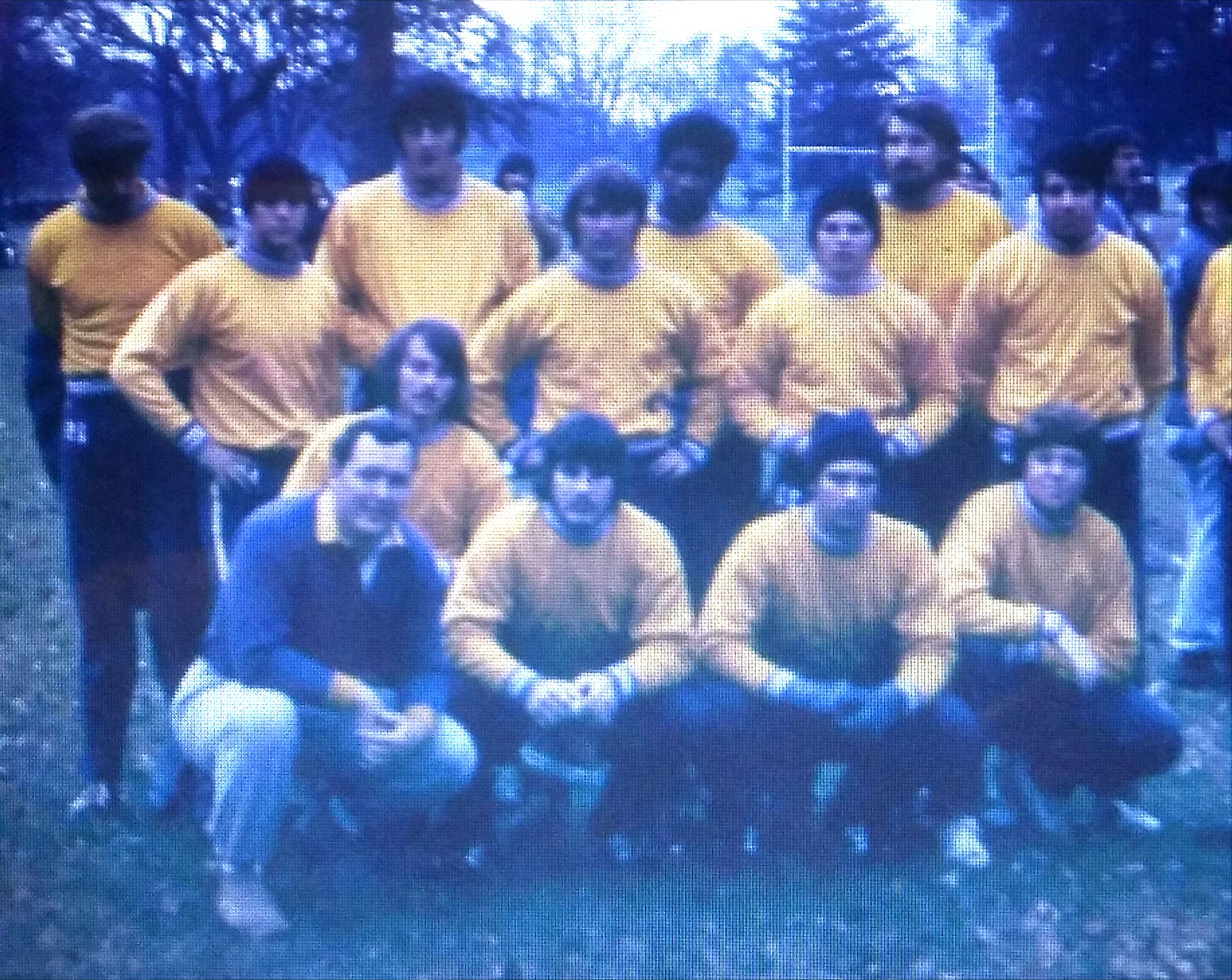
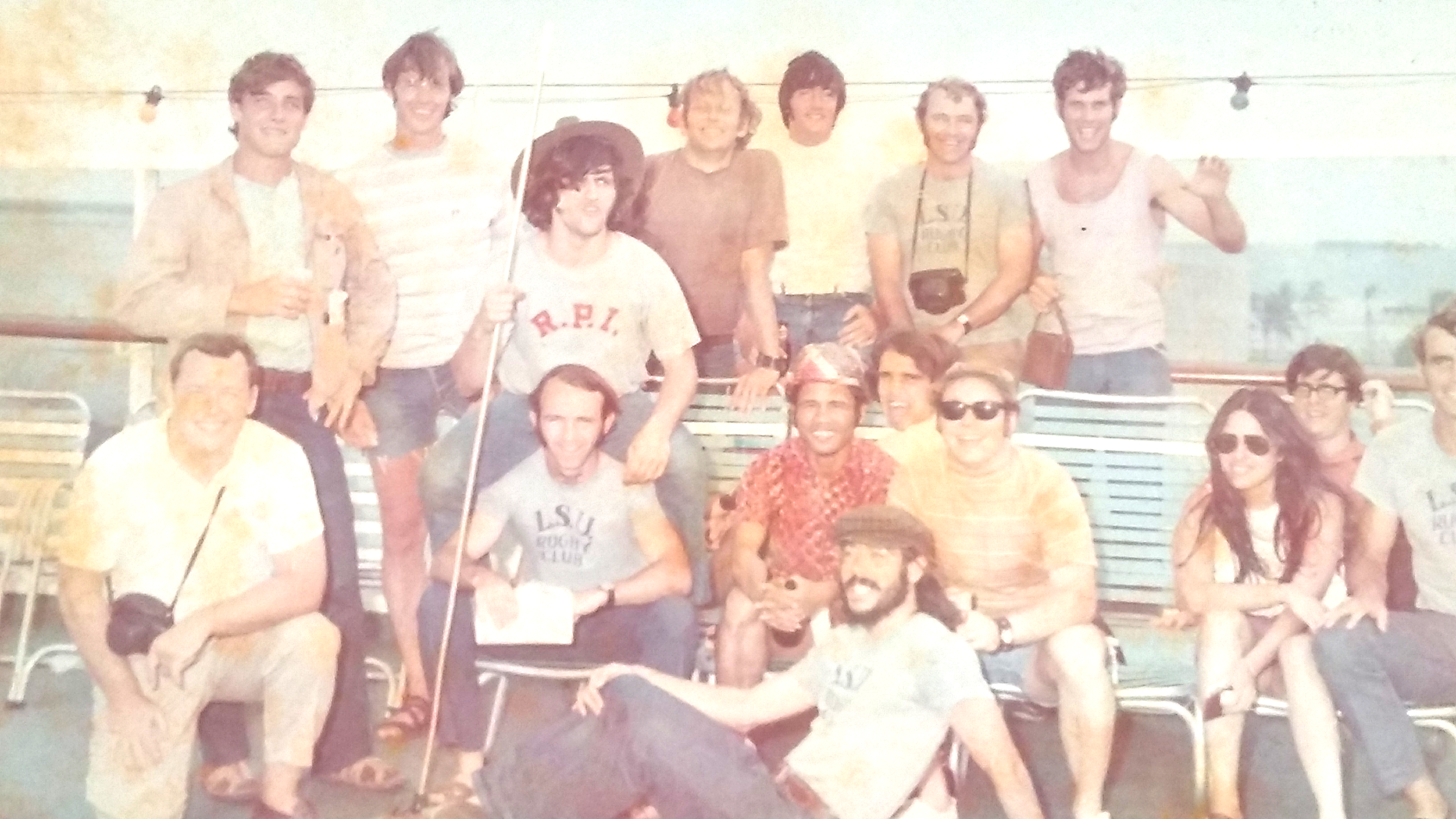
Bahamas here we come.
By Rob Haswell
My arrival on the LSU campus, as a visiting geography professor, in September, 1970, prompted two responses. Firstly, David Dukes, a local leader of the Ku Klux Klan, encouraged all of his followers to sign up for my culture worlds course, on the assumption that I was an apartheid apostle. When I set the record straight they staged a walk out. Secondly, I was beseeched by two Americans to start a rugby club: Jay McKenna had played rugby in Maryland, and proved to be a very good club secretary; while David Terry became equally invaluable – he made our first goalposts and became our very competent, and sober, bus driver. Terry had played in a rugby game at LSU in 1968, but it had ended in a brawl.
On 27 October, 1970, The Daily Reveille, the LSU campus newspaper, carried the following enticing invitation:
“A beer bust; hookers; scrums; knock-ons; and props. That’s what rugby is all about Rugby?? The newcomer to the LSU sports scene is the ancient game of rugby. Recruiting for the Tiger squad will be held in the Union all day Thursday, followed by an impromptu elbow raising party in the Tiger Lair at 5 pm.”
Needless to say more than eighty pitched up for the beer, and two weeks later we headed to New Orleans to play Tulane, who boasted an 8-1 record. We were fortunate to have a sprinkling of foreigners in key positions, such as front row, hooker, fly half and full back, but nine Americans made their rugby debut and we registered a 15-3 win. For the record, Sonny Jeffrey scored the first try in LSU’s rugby history.
Our first home game, on 7 January, 1971, against Hammond, received the following review:
“Imagine 15 athletes decked out in unnumbered grey sweatshirts and shorts, chasing, carrying, kicking and lateralling an oval-shaped ball; tackling, forearming and otherwise maiming their more experienced opponents and you have an accurate picture of LSU’s newest, potentially most appealing, yet officially unrecognised minor sports team.
The game they are playing is rugby and though it was conceived in other parts of the world, it was made for concrete canyon fans. Rugby combines the artistic footwork in soccer with the blatant brutality of football and most Americans, especially Louisiana Americans, love institutionalised bloodshed”.
Initially we played on narrow American football practice fields, but after being recognised as a club sport, thanks to the efforts of Hal Rose, we laid out an almost full size rugby field on a cow pasture alongside a concrete car park. Terry made our goalposts – his finest erection — and we had to squeeze the field into the space available, and so we named it Gerry Mander Field – it took the Athletic Director, who drove right past the field every day, several weeks before he got the pun, laughed his head off, and provided us with the scaffold materials to build our not- so- grandstand. Then he invited us to play a curtain-raiser to an LSU football game, in LSU’s Tiger Stadium, which we did by playing against Rice in the stadium on 2 October, 1971. It was an historic occasion, but the narrow field inhibited backline play, so we followed it up by playing Notre Dame, on Gerry Mander Field, in front of several thousand spectators, many of whom then went to Tiger Stadium to watch the LSU vs Notre Dame football game. There is no reason therefore, why rugby and football cannot co-exist, in a mutually beneficial relationship, on American campuses, and, in fact, rugby tackling is now belatedly recognised as being a far safer option, than using your helmet and suffering the inevitable head injuries being sustained by football players.
Establishing ourselves as the best team in the southern U.S. wasn’t all that difficult, but resulted in us travelling to the Bahamas, in late 1971, and becoming the first U.S. college team to defeat the Freeport Rugby Club. The drive to Miami, in three vehicles, and the boat ride, sponsored by Governor Edwin Edwards, is the stuff of legends.
My brother John, who was living in Bulawayo at that time, visited us and added much-needed coaching for our forwards. When he explained that the town’s name could be translated as ‘The Place of Slaughter’, the Americans decided then and there, to form a huddle before the kick off of a game, link hands and shout out “BULAWAYO”, and to this day it is LSU’s equivalent of the Haka, and the word also appears on the club’s crest.
1972 saw LSU finish third in the first National Collegiate Rugby Tournament, losing to Palmer Chiropractic College, who just happened to have Roy and Ian McCullum in their team. We avenged that by narrowly beating Palmer, minus their Boks, at LSU later that year. Our national recognition saw us invited to the annual Sevens Tournament, held over the November Thanksgiving weekend, in Washington D.C. Imagine driving all that way for a sevens tournament, but of course each road trip was epic, with pillow fights, mooning and partying the order of the day. We crisscrossed the South, and beyond, from Texas to Florida, and from Tennessee to Virginia, and north to Big Bend, Indiana. ‘We were young and we were strong but running against the wind’.
I insisted that we played hard and partied hard, as the camaraderie in rugby is completely absent in American sports. We played a running and passing game as befits a University team, but is also attractive to American athletes and sports fans, who see more than enough crash ball plays in American football. Rewardingly, the LSURFC has produced a steady stream of rugby players, who have earned representative and international rugby recognition. Boyd Morrison, Bob “Big Red” Causey and Gary Lambert have played for the U.S. Eagles, with Causey and Scott McLean, a former LSU and Eastern U.S. scrumhalf, coaching the current LSU team, who play in the Red River Conference.
In addition, Les Bratton, a founding member and player, established the Louisiana Exiles as an alumni club, who successfully and annually participated in the Saranac and Aspen Tournaments. Furthermore, LSURFC alumni, particularly, Gary Giepert and Tim Falcon, have played a leading role in establishing rugby in high schools in The Big Easy, and hence the rise to national prominence of the New Orleans Rugby Club. In fact, the Falcon family, Tim and his three sons, have made a major contribution to rugby in Louisiana, and that will continue with Tim being the driving force behind the establishment of the NOLA GOLD professional franchise in 2018. I urge rugby people throughout the South, to support this important step in the growth of rugby in the U.S. After all, a little Nawlins never hurt nobody, so make the trip.
I was able to maintain contact with the club by visiting the U.S. regularly in the 1980s and 1990s – two of our sons, Bobby and Benjamin, were born in and now reside in the U.S., so I have also been a bi-annual visitor more recently.
In summary then, although I planted the rugby seed at LSU, many others have watered and nurtured it over the years. So much so, that on 29 October, 2020, the LSURFC will be 50 years old—no mean accomplishment and testament to the blood, sweat and beers of so many over so many years. Hopefully, I will make it to the celebrations. BULAWAYO!!!!!!!!!!
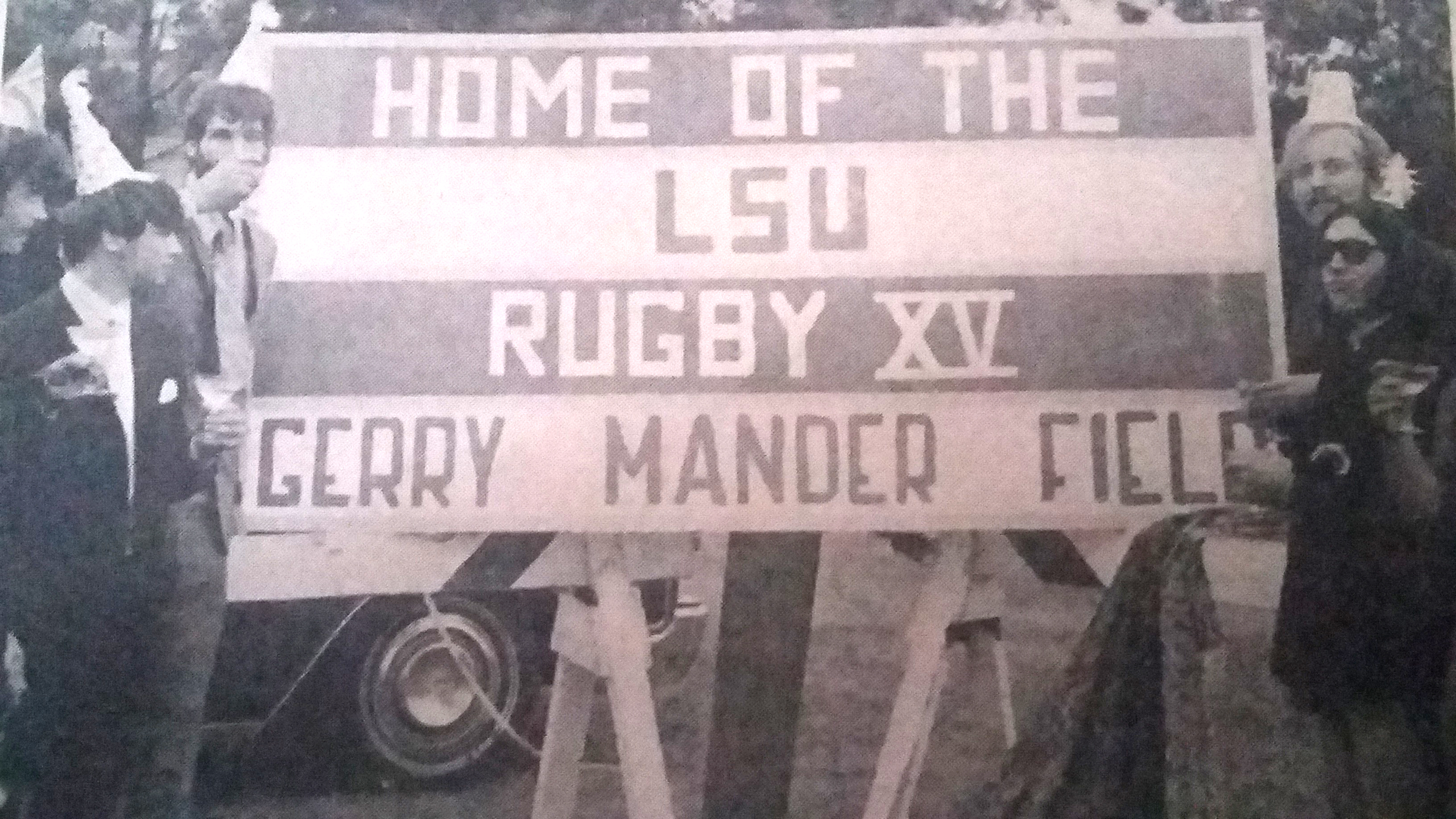
Toast to first rugby field on LSU campus.

LSU team in D.C.
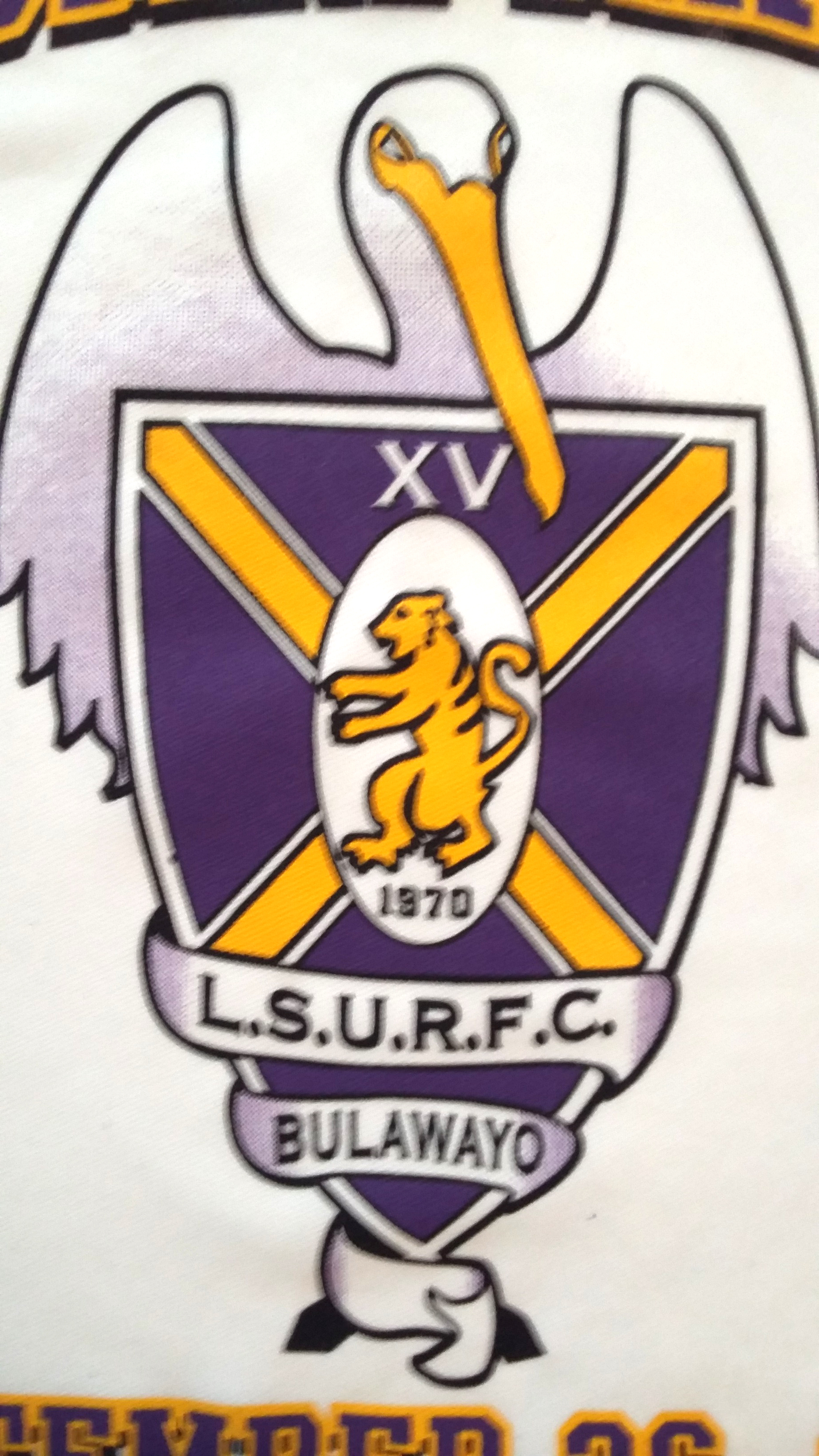
LSU Rugby Crest.
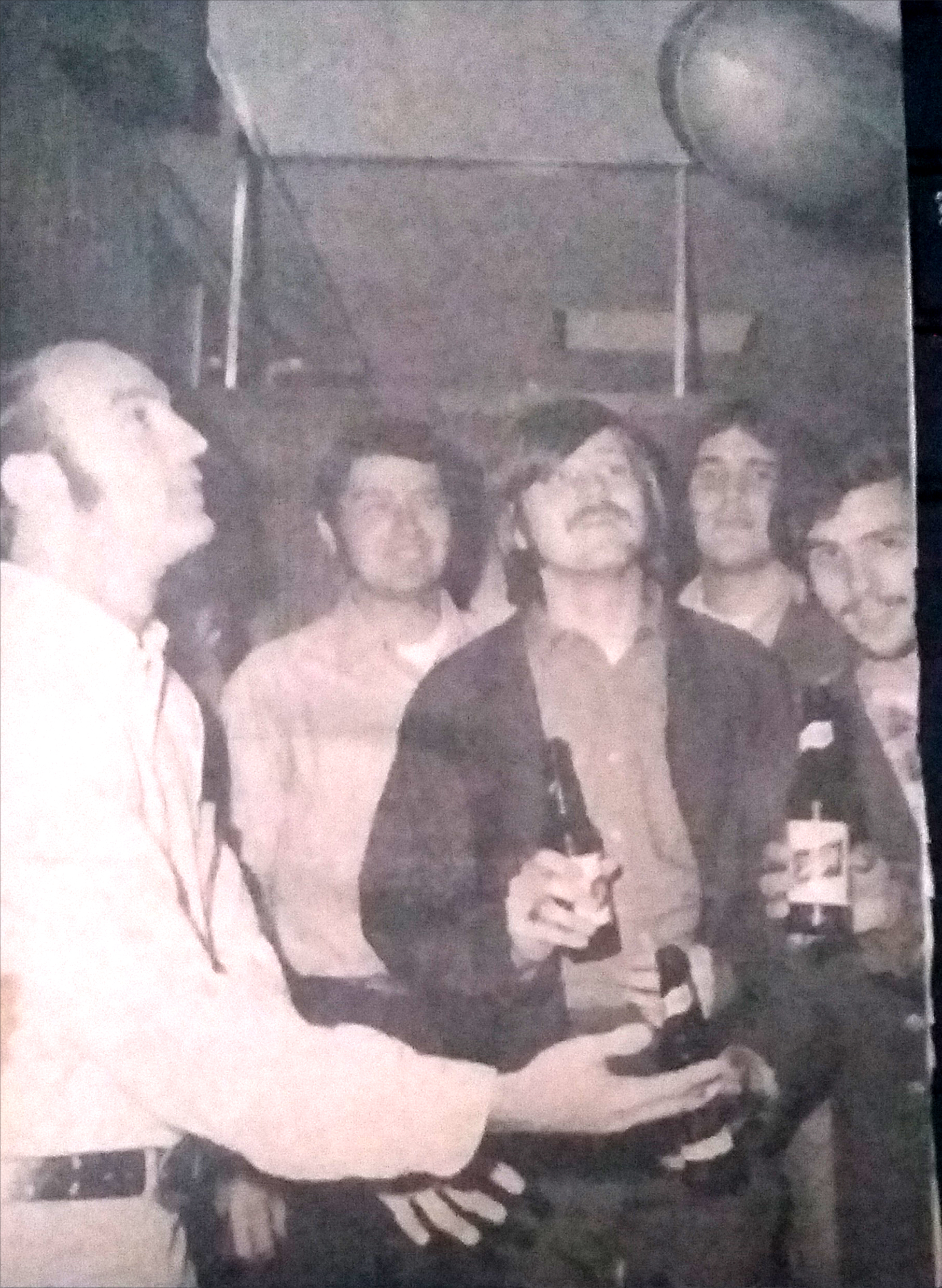
LSU Inaugural Meeting.
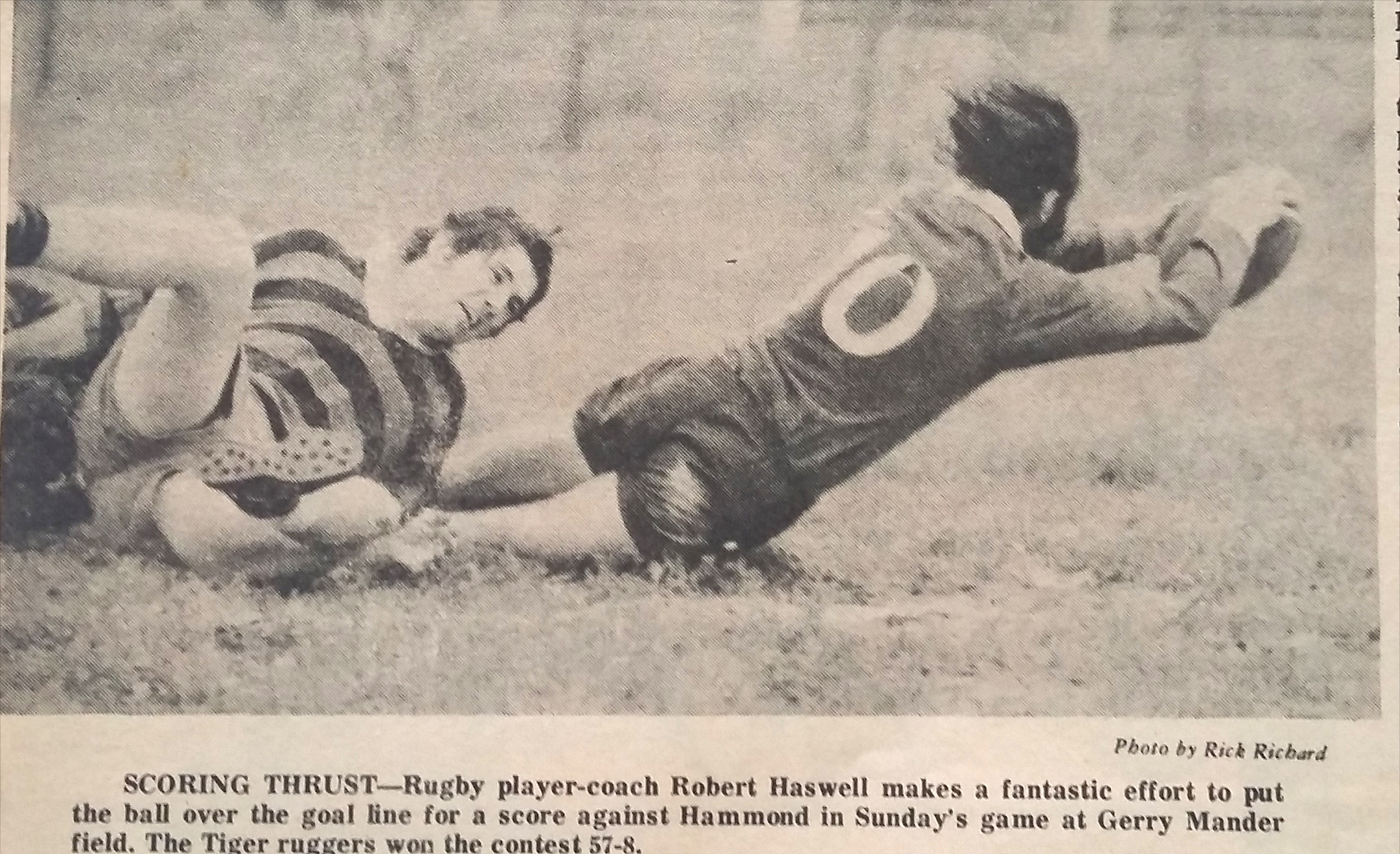
Early newspaper clipping.
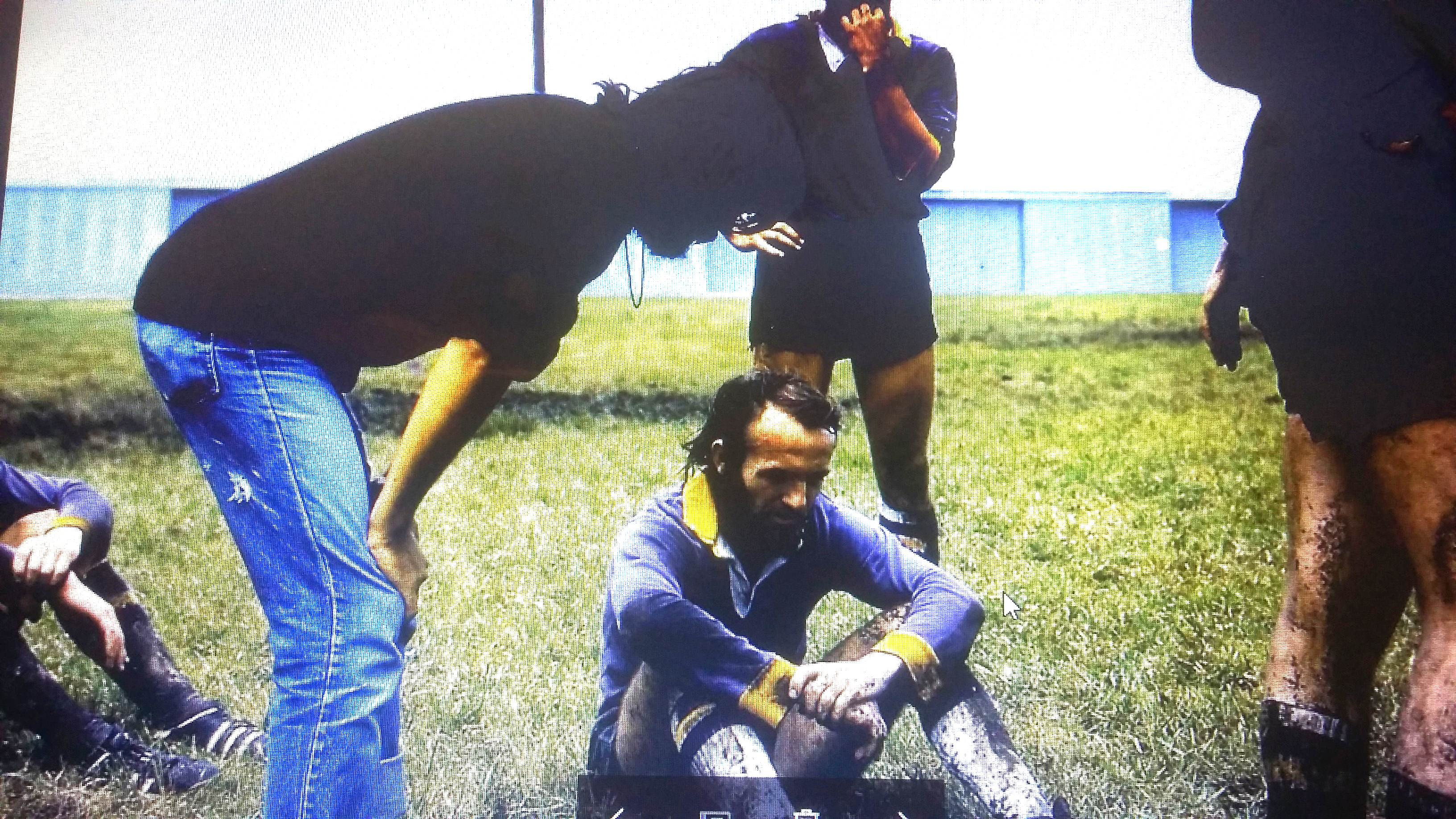
Les Bratton telling Rob how to play rugby.

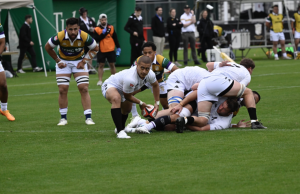
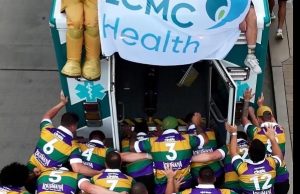
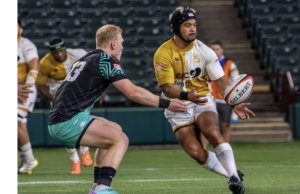
You must be logged in to post a comment Login